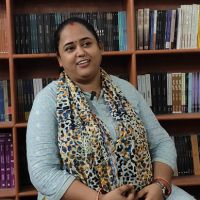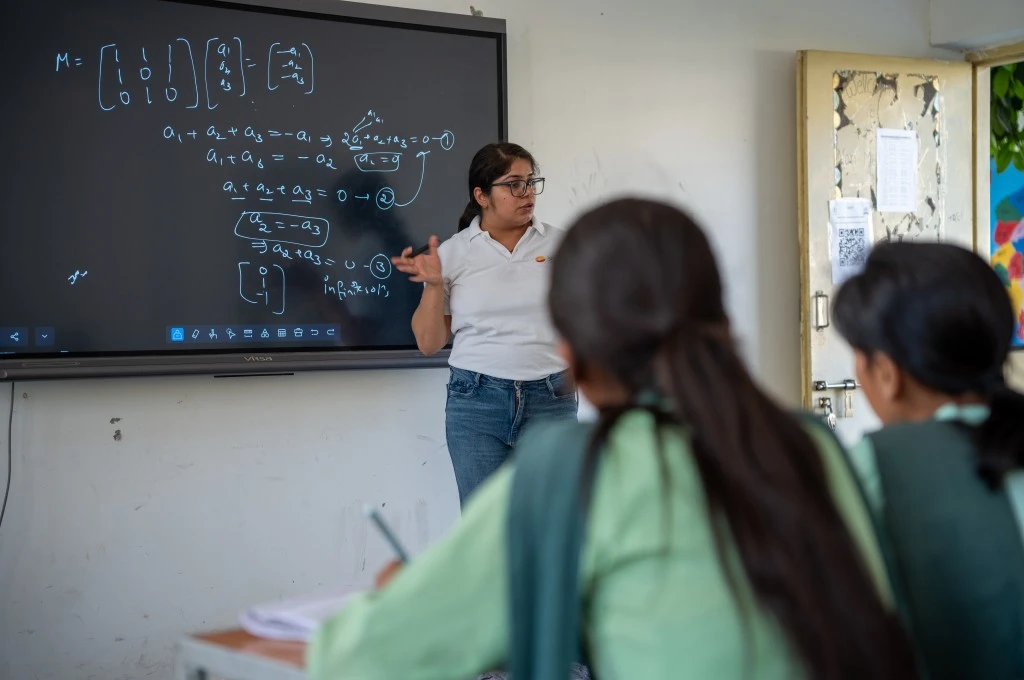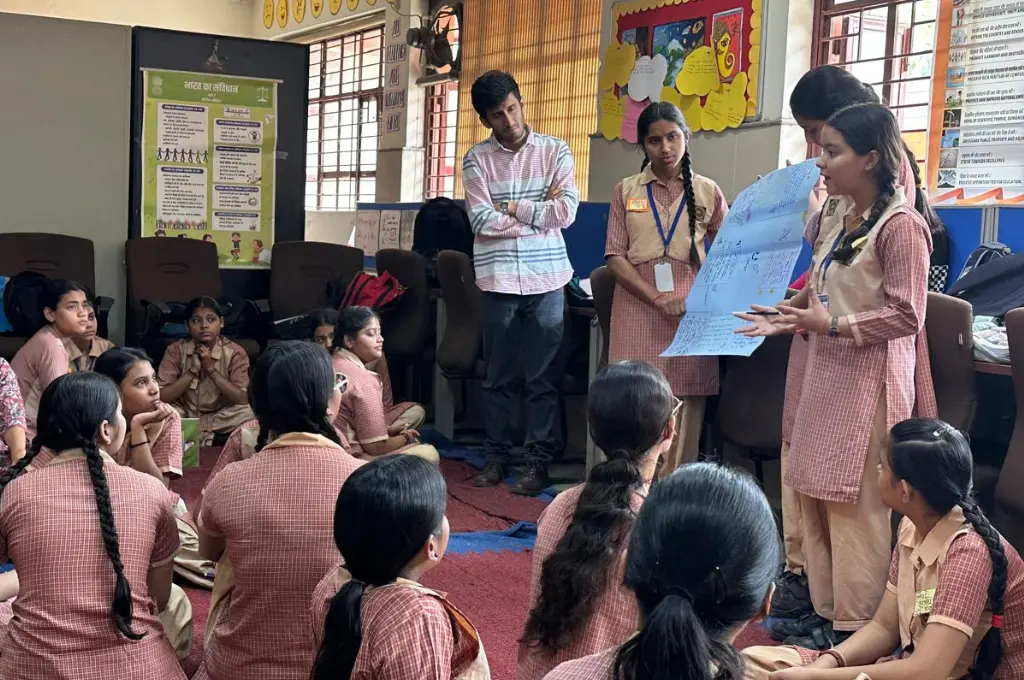When I was young, my parents shifted from Bihar to Jharkhand along with my seven sisters, one brother, and me. So I grew up in Ranchi, the capital city of Jharkhand. My parents were teachers and were very involved in our studies. They wanted their daughters to receive the same education as their son and live with complete freedom. This wasn’t easy because our relatives pressured them to get us married instead of ‘wasting money’ on our education, but our parents didn’t give in.
It is because of them that we could choose what we wanted to study and travel the distance for it. For example, I moved to Delhi to get an MBA. I worked there for three years before moving back to Ranchi.
In my career so far, I have worked across various industries. I have held a corporate job, worked at UNICEF, and also been a bank consultant. Since 2020, I’ve been employed as a programme associate at Quest Alliance, focusing on their social–emotional learning (SEL) programme—a learning process that is based on building a culture of sharing, deep listening, and empathising. I visit government schools in Jharkhand’s East Singbhum district to help teachers understand and implement SEL lessons in their classes. This allows me to spend a lot of time observing teachers, and their growth, as they embrace SEL practices and engage more with the students. I also get to listen to children who share their lived experiences and pose numerous queries to us every day. I think these daily interactions are slowly changing me for the better. The patience and empathy that SEL has taught me is helping me navigate relationships in my personal life too.

6.00 AM: I usually wake up between 6 and 6.30 am depending on how far I need to travel on a particular day. I live with my husband, our two-year-old daughter, and my in-laws. So there are always a lot of chores to complete and the whole family wakes up quite early. I juggle household chores and my office work quite well now. After waking up, I prepare tea and breakfast for the family. Before leaving for work, I also get my daughter ready for school. If I am going to a faraway school on a particular day, I let my family know that I will be coming back late.
Frankly, it took time to adjust to the idea of living in a joint family. I was free-spirited and my father was unsure if I was cut out for married life and the many responsibilities that come with it. I didn’t want to get married, so initially I rejected many proposals. When I became part of my husband’s family, I had to live with people who had a world view different from mine. I am glad that my marriage coincided with my work on SEL, which taught me to be less judgemental. Since the programme required me to listen patiently to different perspectives, it made me less harsh in my opinion of people.
9.00 AM: I arrive at a school in East Singbhum district and go and meet the principal. This has become a ritual now. For example, I have known one of the principals for years; when we meet, we discuss our lives and she also informs me about the well-being of the students. If a student is dealing with an issue, she lets me know and together we make a plan to resolve it.
After this, I participate in the morning assembly. I begin with a fun activity to engage the children. For example, if it’s a child’s birthday, we celebrate it together, which makes all the children happy.
When you engage with students through play, it allays the fear that students have for their teachers.
In the classroom, I first observe the children’s expressions and moods. Then, I proceed to conversation starters such as “What colour do you associate with today?” or “What are you craving to eat today?” Based on their responses, I may organise some light-hearted activities such as drawing and painting their emotions to put them at ease. As an SEL coordinator, I always strive to create an environment where children feel comfortable and can freely share their thoughts and concerns with me.

I remember that when I joined Quest Alliance and was told that I will be working on SEL, I was stumped. I had never heard of this term. I took part in a four-day SEL training programme, which focused on understanding what we feel as individuals, how we experience joy and sorrow, and how we should share these feelings with others. In essence, the training emphasised not just understanding ourselves better but also understanding others and learning how to express emotions effectively. It was a completely new experience for me, as it was more about exploring emotions through activities rather than following a structured curriculum.
Now I know how important it is to recognise our emotions and be true to ourselves before we start working with children. It is only when we do this that children open up to us.
We have observed this change with teachers who have integrated SEL into their teaching methods. When you engage with students through play, it allays the fear that students have for their teachers. In many cases, we have seen that SEL has also helped teachers shed their inhibitions and fully express themselves. And this effect percolates beyond SEL and into other subjects that they teach.
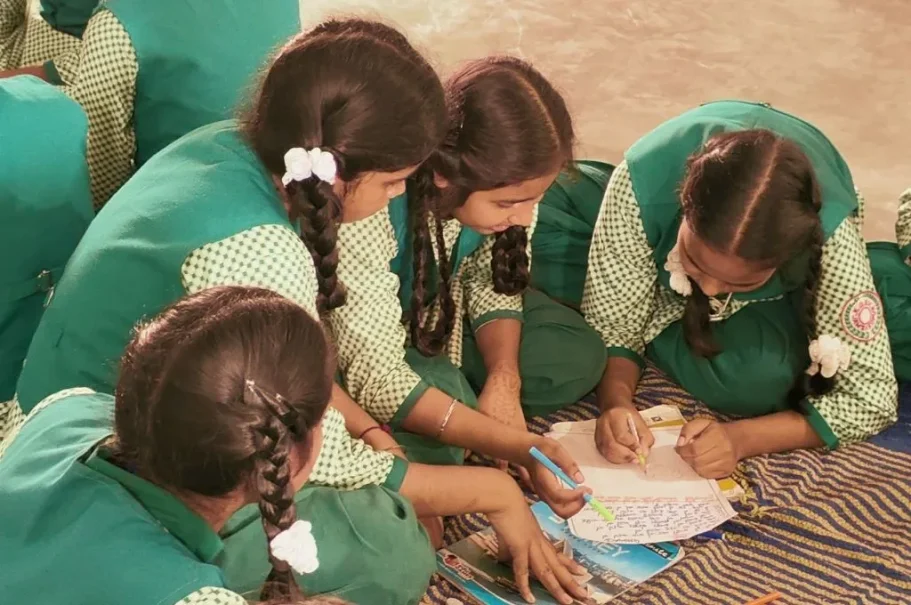
12.00 PM: Before the SEL sessions start, I have a conversation with the teachers to learn about the problems and concerns that they may have. Now they mostly talk about how to make the SEL classes better or what benefits they have seen from the classes, but there was a time when they were worried that SEL would be an additional task in their busy schedule. They would say, “We have to prepare students’ progress reports and check their copies. Where is the time?” We told them that we will help them with some of these administrative responsibilities if they are willing to try out SEL at least once a week. As SEL became part of their weekly routine and they started to notice a change in the students’ behaviour towards them and in the overall class atmosphere, they started taking initiatives on their own.
The SEL sessions are always fun. Students learn through storytelling, painting, dancing, and singing. It is a pleasure to observe these classes as an outside participant.
Building relationships with the schools and teachers was a long process.
In the early days of our SEL implementation, I used to conduct these classes. Now that we have trained teachers in the schools, my job is to monitor the progress of the classes as well as the teachers. Things are much easier now. I don’t visit each school every day, but I receive updates on the teachers’ WhatsApp groups that we have created. They send me videos and photos from the session. If they are unable to conduct an SEL class on a particular day, they let us know.
Building relationships with the schools and teachers was a long process, since we were outsiders. We would participate in the schools’ activities such as their cultural events. If the school had an issue with a student, we would discuss the problem and try to resolve it. This is how we gained the trust of the school administration, and then began our work.
We had to choose teachers who could become part of the SEL training programme, so we started attending their classes on other subjects. We wanted teachers who were willing to go beyond the traditional methods of teaching and were committed to investing in building their own capacities. For example, I worked with a teacher who was afraid of public speaking, which made it difficult for her to fully express herself in class. However, she had excellent individual equations with the students. She wanted to be able to engage with her class, and SEL provided her the tools to do that because in this method there are prompts for conversations and streamlined activities.
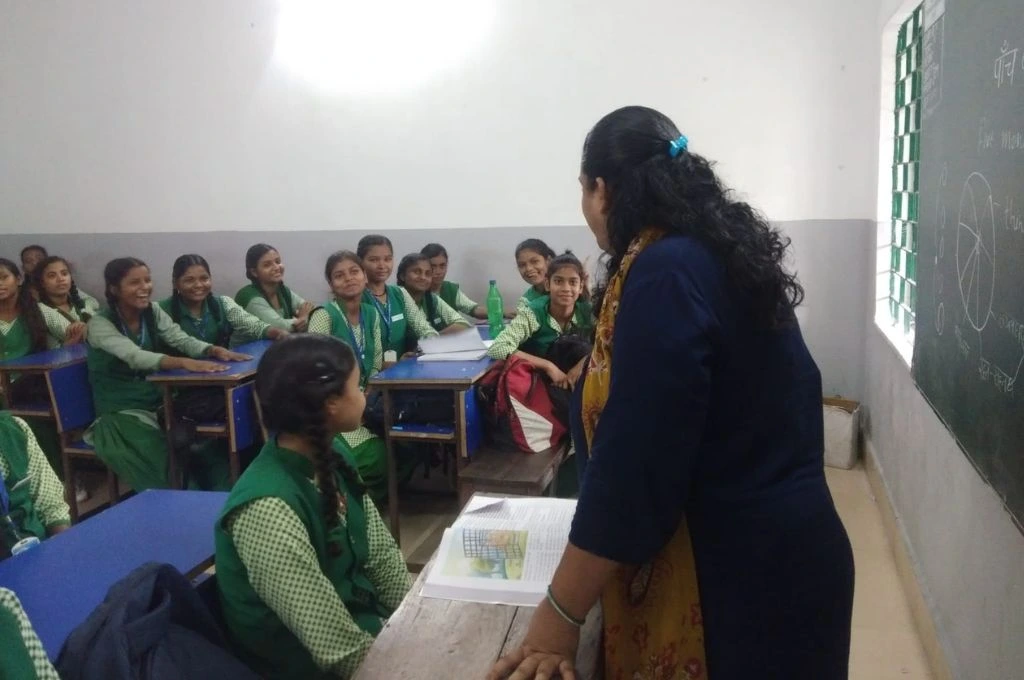
3.00 PM: My work at school usually wraps up by 3 pm and I go back home with a lot of thoughts from the sessions and interactions. The stories taught as part of the SEL curriculum are often derived from real experiences of people in Jharkhand or written in a way that enables the students to see themselves in the stories. For example, in 2023, I was conducting a class with the students of standard 9 at the Kasturba Gandhi Balika Vidyalaya in my district. We were discussing the story of a survivor of witch-hunting in Jharkhand; she had spent her life fighting the stigma of being branded a witch and countering the superstitions associated with it. Once the class was over, a young girl came up to me and asked if she could meet the character in the story. Eventually, I discovered that the child’s grandmother was also being subjected to a witch-hunt in their village.
Not every child has the courage to walk up to teachers and coordinators like that. Keeping this in mind, we encourage students to write down their emotions and problems and deposit them in an SEL box. Children write about challenges at home or any personal issues that they want to share. If we see that there’s a child who never writes anything, we pay special attention to them and try to learn whether they need additional support.
We review the concerns carefully. Each issue is then discussed with teachers and wardens to decide how best to resolve them. After that, we talk to the child directly about their problem and work on a solution.
4.00 PM: Once I reach home, I spend time with my daughter. She is very young now but she will soon enter an education system that encourages people to ask questions. I am happy about that. This is nothing like when we were growing up, when education was limited to textbooks.
I say my prayers and then help my sisters-in-law prepare dinner. My husband typically arrives home by 10 pm. After dinner, he and I discuss our day with each other.
11.00 PM: I am guilty of bringing my office work home but there is a lot that we need to do. My work often goes on until midnight.
I prepare and submit a report about what I did during the day. Additionally, we are required to log into a software the details of the activities conducted during the day, including the outcomes, challenges, and areas of improvement, as well as how the girls participated in the sessions.
We need to constantly reflect, prepare, and plan so that what we take to the teachers and students is actually helpful. Once a week, we also have a meeting of the SEL programme team, which helps us learn about the progress of the project. Here, we make presentations of the activities and lessons that we will bring to the school in the coming week.
All this is necessary. If we don’t keep working on ourselves, how will we help the students? How will we create a positive environment for them?
This is the second article in a 12-part series supported by Porticus. The series highlights lessons and insights on whole child development, seeking to build an understanding of the opportunities and solutions that can enable social-emotional well-being for children and young people.
—
Know more
- Watch this video to learn why SEL is important for society at large.
- Read how SEL can help teachers manage their workload.
- Learn why playing and socialising is important for a child’s all-round development.

